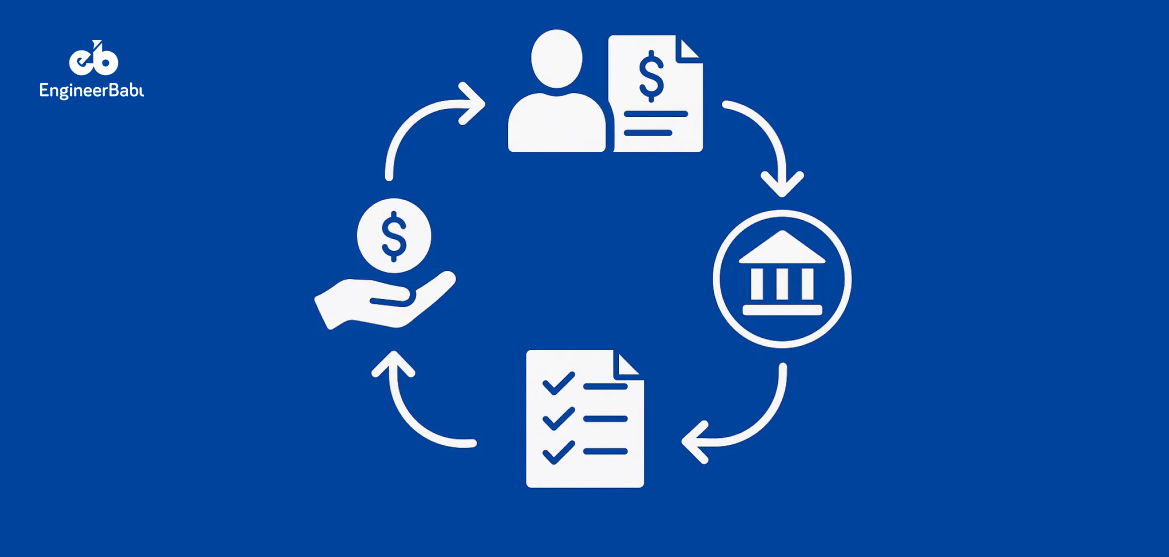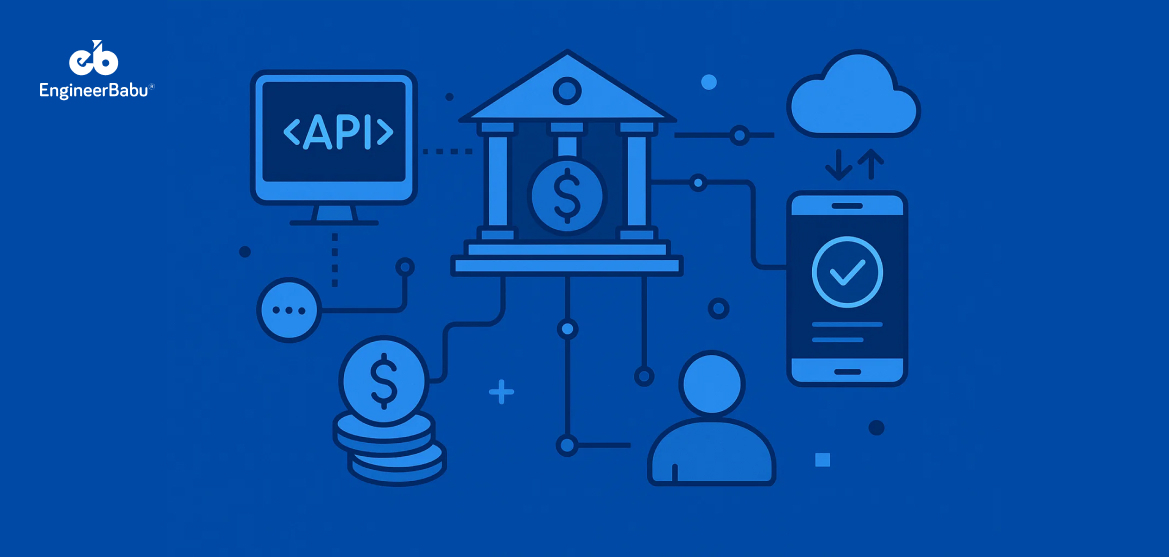Imagine buying a $200 pair of sneakers today and paying for them in four interest-free installments without breaking a sweat. That’s the power of Buy Now, Pay Later (BNPL), and it’s reshaping how Americans spend.
In the U.S., the BNPL market is set to surge by 12.2% in 2025, reaching more than $122 billion by year end, according to FinTech Futures. This explosive growth is exactly why businesses are diving into the BNPL app development or its integration.
So, what does Buy Now, Pay Later development actually involve? In this guide, we’ll walk you through what makes a BNPL app tick. So, if you’re building a fintech startup or empowering a retailer with flexible payments, this is your roadmap to delivering seamless, secure installments to shoppers.
What is BNPL and How Does It Work?
Buy Now, Pay Later (BNPL) is a payment model that lets customers purchase goods or services immediately and pay for them in smaller, scheduled installments. These are often interest-free if payments are made on time.
It sits between traditional credit and cash purchases, offering instant approval and flexible repayment plans without the long application process of a credit card.
Here’s how a typical BNPL flow works:
- A shopper selects BNPL at checkout (online or in-store),
- Gets approved in seconds based on a quick credit/risk check,
- Pays the first installment immediately, and
- The remaining amount is auto-deducted over weeks or months.
For merchants, BNPL increases conversion rates and boosts average order values, while consumers enjoy improved affordability.
In BNPL app development, the core system must handle real-time credit scoring, payment scheduling, and merchant integrations seamlessly. A well-built BNPL platform balances user experience, fraud prevention, and regulatory compliance. Thus, ensuring both sides, merchant and customer, benefit from every transaction.
Must-Have Features in BNPL App Development
A BNPL app’s success hinges on how well its features serve both users and merchants. While the concept is simple, split payments over time, the execution demands security, flexibility, and a flawless user experience.
Below are the core capabilities you can’t afford to overlook when planning your build.
1. Seamless User Onboarding & KYC
From the moment a user downloads your app, onboarding should be frictionless. Quick sign-up with integrated KYC ensures identity verification without dragging out the process. Using biometric logins and document scanning helps speed approvals while keeping fraud attempts low. Thus, making the first impression a trust-building opportunity.
2. Real-Time Credit Assessment
BNPL app development requires a credit evaluation engine that works in seconds. Pulling data from credit bureaus, analyzing spending patterns, and applying AI-driven scoring models ensures only eligible customers are approved. This not only reduces default rates but also keeps the checkout experience fast and interruption-free.
3. Flexible Payment Scheduling
Every customer’s budget is different. Offering weekly, bi-weekly, and monthly installment options alongside automated payment deductions makes repayments predictable and painless. Paired with clear due date visibility, flexible scheduling reduces missed payments and builds loyalty among cost-conscious shoppers.
4. Merchant Integration Tools
Merchant tools are the lifeblood and should be a priority in your BNPL app development, and integration must be effortless. API’s, plug-ins for major eCommerce platforms, and POS compatibility let retailers offer BNPL instantly. This leads to higher basket values and better conversion rates, making Buy Now, Pay Later a win-win for customers and sellers.
5. Automated Notifications & Reminders
Proactive communication prevents repayment issues. Push notifications, SMS, and email alerts for upcoming payments, successful deductions, or failed attempts keep customers informed. As a result, this reduces defaults and minimizes customer service requests by addressing issues before they escalate.
6. Dispute Resolution & Customer Support
Refunds, disputes, or billing errors can occur, so, your BNPL app development process must include a streamlined resolution process. In-app ticketing, chatbot development for quick queries, and escalation workflows ensure problems are solved fast. Thus, maintaining trust and keeping merchant-customer relationships intact.
7. Robust Security & Compliance Features
Lastly, sensitive data is the backbone of trust. Implement PCI-DSS compliance, tokenization, multi-factor authentication, and regional lending law adherence. Regular security audits and penetration testing ensure that every transaction is shielded from fraud or unauthorized access.
Step-by-Step BNPL App Development Process
As we know, building a BNPL platform isn’t just about coding a payment feature, it’s a structured journey blending research, compliance, technology, and user experience.
Each step has its own challenges, but with the right approach, you can deliver a product that earns trust from both consumers and merchants.
1. Market Research & Compliance Mapping
Before starting BNPL app development, study target markets, consumer behavior, and merchant needs. Identify regulatory requirements like lending limits, KYC/AML rules, and consumer protection laws in your launch regions. This groundwork prevents costly pivots later and ensures the product is legally viable from day one.
2. Define the Business Model
Decide if your BNPL solution will target consumers directly (B2C), merchants (B2B), or both. Determine revenue streams, transaction fees, merchant fees, or interest on late payments. Mapping this early allows development, integrations, and marketing strategies to align with your commercial objectives, improving long-term sustainability.
3. Wireframing & UX Design
Design is not just about looks, it shapes trust. During BNPL app development process, wireframes help define seamless flows for onboarding, credit checks, and payment scheduling. Focus on reducing friction while maintaining transparency in terms, so users understand repayment commitments before they confirm a purchase.
4. Selecting the Tech Stack
Choose frameworks and languages suited to your timeline, scalability goals, and feature set. Cross-platform tools like Flutter or React Native speed development, while NodeJS development handle complex backend processes. Select secure, scalable databases and ensure the stack supports integration with payment gateways and APIs.
5. API Development & Payment Gateway Integration
Building robust API development capabilities is key for connecting with payment processors, merchant platforms, and credit bureaus. Gateways like Stripe, Adyen, or PayPal must integrate seamlessly for real-time transactions. Well-documented APIs also make it easier for merchants to adopt BNPL into their sales channels.
6. Risk Management Engine
Integrate real-time credit scoring, fraud detection, and spending limit algorithms. Pull data from multiple sources, credit bureaus, transaction history, and behavioral analytics to make instant lending decisions. This helps reduce defaults and ensures responsible lending practices without slowing down the checkout experience.
7. QA, Security & Compliance Testing
End-to-end testing is critical. Validate every flow, onboarding, payment scheduling, late fees under different device, network, and load conditions. Security testing in BNPL app development ensures encryption, tokenization, and compliance with PCI-DSS and regional lending laws before the product goes live.
8. Pilot Launch with Select Merchants
Release the app to a small group of merchants and users to monitor real-world performance. This controlled environment helps you detect integration bugs, UX issues, and unexpected behaviors. Pilot testing also gathers valuable merchant feedback on integration ease and customer adoption.
9. Feedback-Driven Optimization
Use pilot data to refine credit models, payment flows, and UI/UX elements. Prioritize fixes in your BNPL app development process that directly affect repayment rates or merchant conversion. Continuous iteration assures that the app meets user needs while staying compliant and competitive.
10. Full-Scale Launch & Scaling Strategy
Once optimized, scale by onboarding more merchants, expanding to new regions, and adding features like loyalty programs or subscription billing. Also, monitor KPIs like repayment rates, average order value, and merchant retention to guide further improvements.
BNPL App Development Costs
The cost of creating a BNPL platform is shaped by a blend of design complexity, development scope, integrations, and compliance demands. A thoughtfully designed interface that’s intuitive for users and visually aligned with a brand can influence the effort required in both UI and UX stages.
BNPL app Development work covers everything from building user flows and backend logic to incorporating credit checks, installment scheduling, and transaction monitoring. However, integrating payment gateways, merchant platforms, credit bureaus, and KYC/AML providers introduces its own set of challenges depending on security layers and API reliability.
Also, compliance adds another layer, requiring alignment with financial regulations, adherence to PCI-DSS standards, and implementation of advanced encryption to protect sensitive data.
These factors collectively determine the scale of investment needed to launch and maintain a BNPL solution that is both secure and scalable. So, it is better to contact professionals like EngineerBabu to understand the total cost and development time.
Conclusion
BNPL is a standard in how consumers expect to pay nowadays. Delivering a seamless, secure, and compliant BNPL experience takes more than just coding, it requires a strategic approach that blends design, development, risk management, and regulatory expertise.
Businesses that invest in BNPL app development now are better positioned to meet evolving customer expectations and capture market share in this fast-growing space.
So, if you’re ready to bring your vision to life, you can hire fintech developers with deep experience in BNPL solutions, payment integrations, and financial compliance to help you launch with confidence.
FAQs
1. What is BNPL app development and who is it for?
BNPL app development is the process of creating a platform that lets customers split their purchases into smaller installments, often without interest if payments are made on time. It’s ideal for fintech startups, retail businesses, and financial institutions looking to increase conversion rates and customer loyalty.
2. How long does BNPL app development usually take?
The timeline depends on feature complexity, integrations, and compliance needs. MVP development may take significantly less time than a full-scale product with advanced risk scoring, multi-region compliance, and extensive merchant integrations.
3. What security measures are essential for a BNPL app?
A secure BNPL platform needs PCI-DSS compliance, data encryption, tokenization, multi-factor authentication, and fraud detection tools. Regular security audits and penetration testing are also crucial to protect both consumer and merchant data.
4. Can an existing fintech app add BNPL functionality?
Yes, BNPL capabilities can be integrated into an existing app through APIs, payment gateway connections, and credit assessment modules. This approach allows businesses to expand payment options without building an entirely new platform from scratch.
5. What factors influence the cost of BNPL app development?
Costs are shaped by design complexity, feature set, third-party integrations, and compliance requirements. Development team location and the need for ongoing support also play a major role in determining the total investment required.




